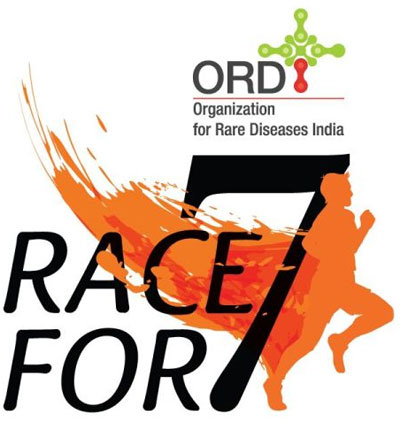By Daphne Clarance: In February, the death of former Pakistan president Pervez Musharraf due to amyloidosis made headlines across the globe. As per reports, Google searches peaked with this rare disease as most people did not quite understand what it was.
In May, India’s first amyloidosis centre was set up in Kerala by doctors at Amrita Hospital. The centre was aimed at evaluating and treating patients suspected of amyloidosis to diagnose different kinds of variants such as AL, ATTR and AA, among others.
Although amyloid, by definition, is a rare disease, most cardiologists, haematologists and other health experts believe that this umbrella of diseases has now become “uncommon.”
Speaking about the prevalence of the disease in India, Dr Hisham Ahamed told IndiaToday.in that with better tools and techniques for diagnosis and innovative methods of treatment, ATTR and AL are now considered uncommon.
“Although we don’t have enough population data to ascertain what the community is like in India, we are still likely to diagnose it more in the future,” said Dr Hisham Ahamed.
The need for India’s amyloidosis centre was seen five years back when doctors assessed it as a rising disease between the departments of cardiology and haematology.
“In 2016, we started a division of cardio-oncology, because this field was a fast-developing subspeciality within cardiology. An offshoot of that was amyloid, an entity which cardiologists and haematologists collaborate,” said Dr Ahamed.
An amyloid working group was set up for three years with the principle that a patient with suspected amyloid would be jointly evaluated with a team approach.
Post three years, the team, in collaboration with Stanford Amyloid Centre, wheels were set in motion. Over 150 patients with amyloid suspicion were diagnosed and treated.
In the meantime, the biotechnological department used a cutting-edge technology called mass spectrometry, which helped in accurately diagnosing the type of amyloidosis with a tissue sample.
WHAT IS AMYLOIDOSIS?
Amyloidosis is a disease in which there is a build-up of protein, called amyloid, around organs.
The protein synthesis in this disease is abnormal. The proteins are misfolded and misaligned because of that they cannot be cleared by the normal mechanisms of the body.
“While the body has an intrinsic system by which it clears proteins, when there’s an abnormal source of amyloid proteins – the misfolded proteins – the body is unable to clear it off and this causes build-up over time,” said Dr Ahamed.
The two most common types of amyloid are light chain amyloid disease and ATTR. Of these, the light chain is the most diagnosed type, especially in the field of cardiology.
HOW IS AMYLOIDOSIS DIAGNOSED?
The first process of suspicion includes identifying the type of amyloid. Since it is a multi-systemic disorder, the common organs affected by this disease are the heart, the kidneys and the nerves.
If symptoms include breathlessness, excess protein leak in the urine (frothy urine), and burning sensation in the hands and feet.
It is diagnosed by a sequence of tests called kappa and lambda free light chain blood tests. The tests help to diagnose if it is light chain amyloid.
If the test is positive, a cardiologist and a haematologist are roped in to further look into the source of the protein production, which usually happens in the bone marrow.
If the test is negative, tests for other types of amyloid like ATTR are checked.
TREATMENT FOR AMYLOID
With the field bursting with innovation, amyloid is imminently treatable if diagnosed early. In the case of a light chain amyloid, the treatment is chemotherapy as the condition can simulate blood cancer.
The haematologist starts monthly chemotherapy measurements. For ATTR amyloid, there’s a new drug in the market called Tafamidis, which is used to treat it.
“But the crux here is to catch the disease early. If we catch it quite late, then therapy might not make an impact on these patients. If it is, however, not treated and the amyloid has reached the advanced stage, then the survival could be less,” said Dr Ahamed.
AWARENESS AND NEW INNOVATIONS
While amyloid refers to an abnormal protein build-up around organs, the reason for it is still not found. In light chain amyloid, it could be anyone, said the expert.
“Light chain amyloid doesn’t have anything to do with extraneous influences like diet pattern or lifestyle. The body has a tendency to develop a clone of cells in the bone marrow and they just start multiplying,” said Dr Hashim.
On the other hand, ATTR is genetic but only witnessed in countries like Portugal and Spain, where certain communities carry genes of amyloid.
Dr Ahamad shared that while amyloid hasn’t reached its peak in awareness on the patient level, it is brimming with innovations at the industry level.
“Amyloid space is exploding with innovations. The new generation of drugs which are coming can not just prevent the proteins from getting deposition but can absorb the deposited proteins. In cardiology, amyloid is the hottest field for cutting-edge therapy,” said Dr Hashim Ahamed.
Link for original Article https://www.indiatoday.in/health/story/indias-first-amyloid-centre-in-kerala-what-is-amyloidosis-and-why-is-is-it-a-hot-topic-in-cardiology-2389107-2023-06-05



